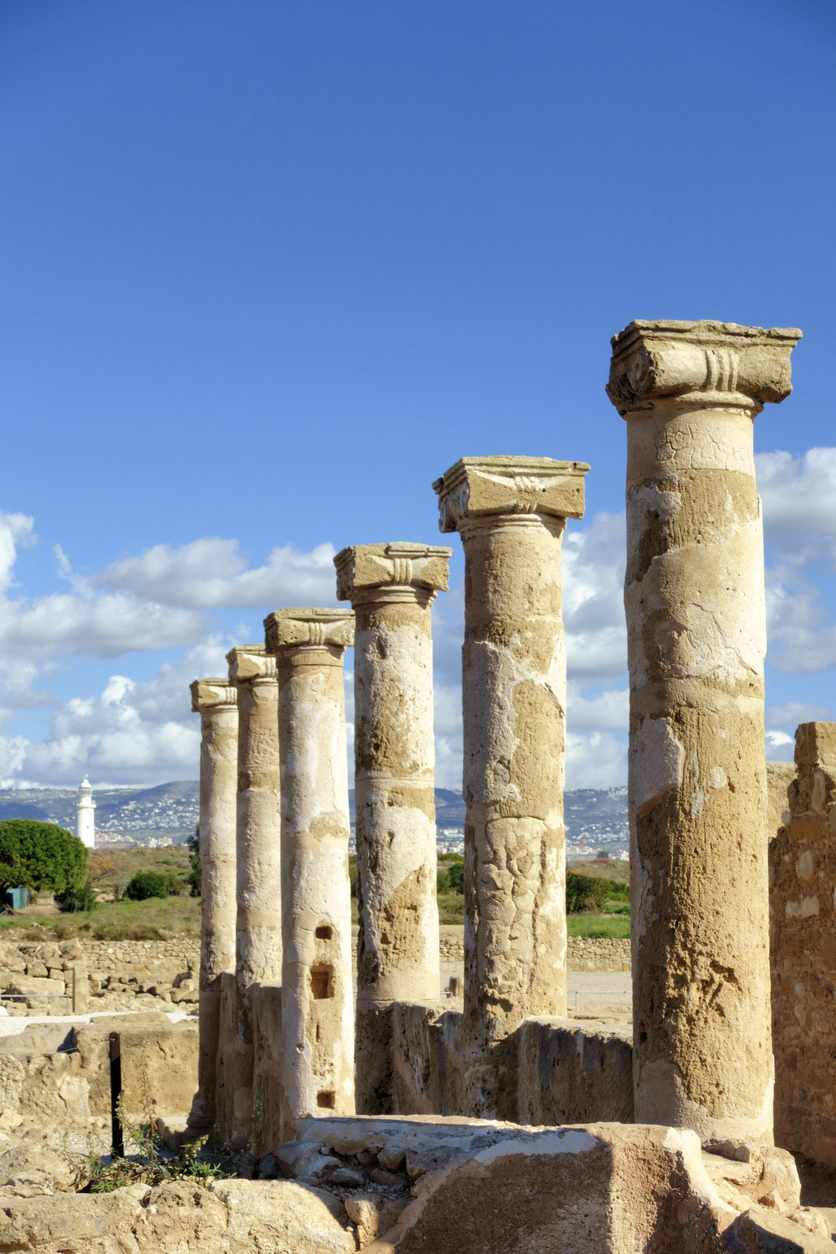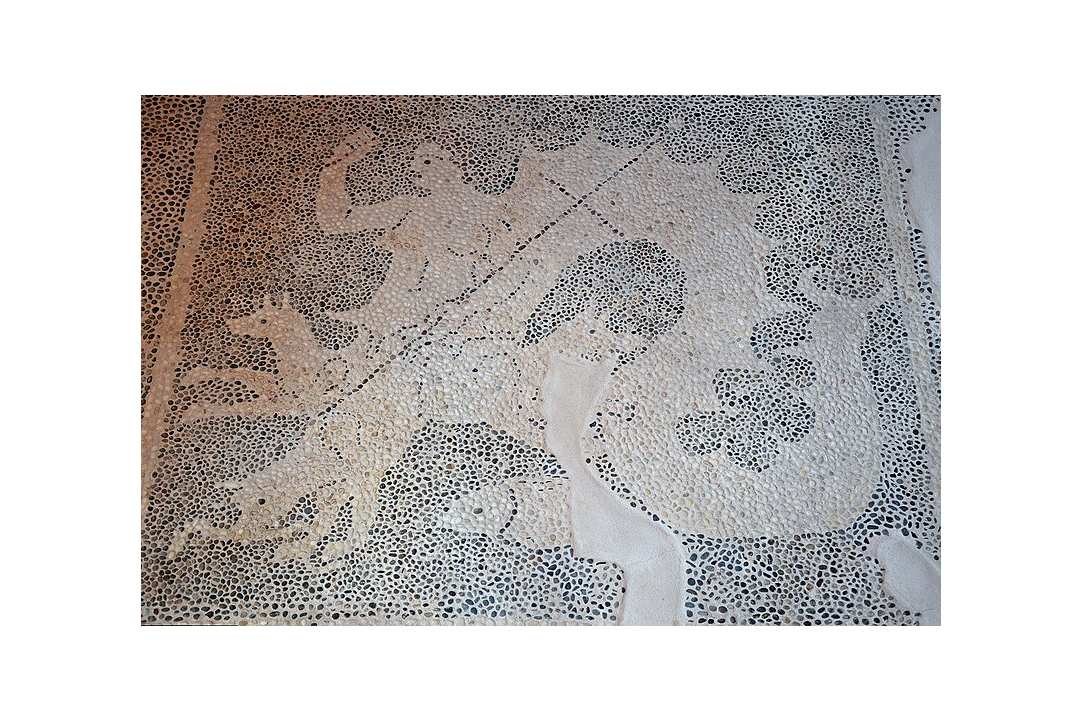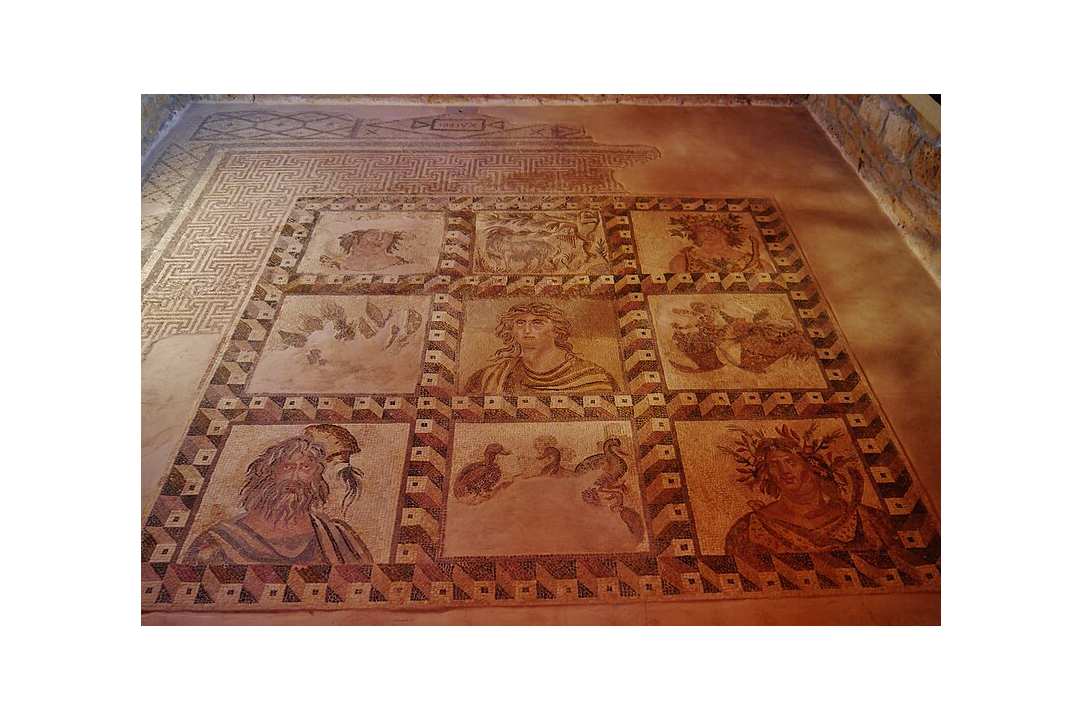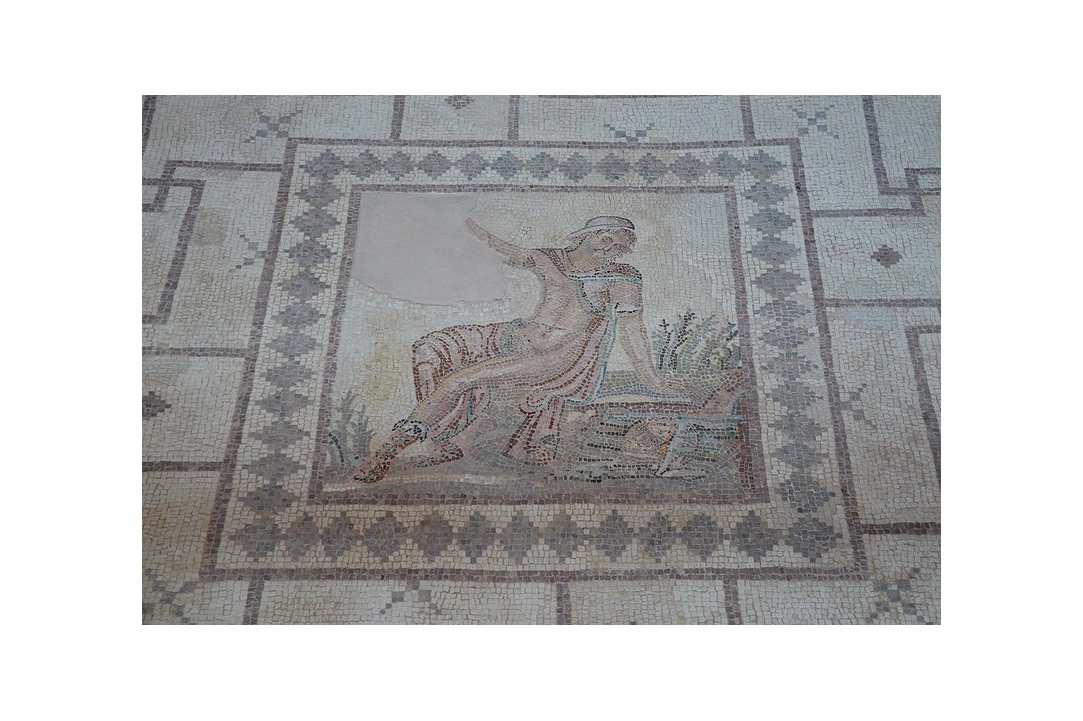Nea Paphos and the House of Dionysus
The magical world of the art of mosaics (Part 1: Rooms 1-3)
One of the places that you should definitely pay a visit to, when you come to Cyprus, is the priceless archaeological site of Nea Paphos. This city was built on a small cape at the south-west side of Cyprus. It was established at the end of the 4th century B.C. by Nicocles, who was the last king of Palaipaphos. Nea Paphos is in an area where, according to archaeological research, there was an older settlement, which was developed around a small, guarded bay and was going to be the future port of Nea Paphos.
Nea Paphos occupies an area of about 950.000 square metres, which is completely surrounded by high walls. In the beginning of the 3rd century B.C., Cyprus was included to the kingdom of Ptolemies, whose capital was Salamis. However, until the end of the 2nd century B.C., Nea Paphos had been evolved to a very important political and financial centre of the area. Therefore, the Ptolemies transferred the capital of the island to Nea Paphos, which was guarded with high walls. Furthermore, the proximity of Nea Paphos to Alexandria and the port of the Cypriot city, which was the most important military outpost of the dynasty of the Ptolemies out of Egypt, were two decisive reasons, according to which, Nea Paphos was evolved in a city of paramount importance for the Macedonian dynasty.
In 58 B.C., Cyprus was annexed in Rome. Paphos remained the capital of the island and it kept being the political and administrative centre of Cyprus. During the Hellenistic and Roman period, the city kept blossoming. It seems, actually, that it had been fully thrived towards the end of the 2nd century and during the 3rd century A.D., something that justifies the title “Sebaste Claudia Flavia Paphos’’ which, probably, Septimius Severus gave to the city (193-211 A.D.).
One of the greatest discoveries in Nea Paphos is the “House of Dionysus”. You should visit this sightseeing for sure. It was built at the end of the 2nd century A.D., and it was destructed at the first half of the 4th century A.D., probably due to seismic activity. This building occupies an area which is calculated to 2000 square meters, of which 556 square meters (i.e. more than one quarter of its total span) are covered by mosaics. Dionysus, the god of wine, is depicted in some of these mosaics; that’s why this building is called “House of Dionysus”. Excavations were held between 1962 and 1965 by Dr. Kyriakos Nikolaou, who was then the Curator of the Department of Antiquities of Cyprus. This residence is very important as it is the first house with mosaics that was discovered in Pafos. Since 1981, the archaeological site of Nea Paphos (as the one in Palaipaphos) belongs to the list of the Monuments of Global Culture Heritage of UNESCO.
The “House of Dionysus” invites every visitor to enter into the magnificent world of mosaics which decorated the first three rooms of the residence.
Room 1: Scylla
If you like mythology and, especially, you're a lover of Homer’s Odyssey, then you know for sure Scylla, a malicious sea monster, which was causing the engulfment of ships. So, the first room’s mosaic depicts Scylla, which is half woman, half fish and half dog. Here, Scylla is depicted with a long-curved tail, whose the ending part is crab-like claws. At the front, we see the front parts of three dogs, while Scylla’s upper waist has a female shape. She is naked and she is holding a long thin instrument with her right arm, which looks like a trident, while with her left arm she is holding a mast, probably a mast of a sunk ship. At the left and below, one of the three dogs is holding in his mouth a creature which looks like an eel, while a bigger fish is swimming freely next to it. Technically and stratigraphically, this mosaic has been dated to the end of the 4th century and the beginning of the 3rd century B.C., making it as the earliest mosaic that is ever known in Cyprus. In fact, Scylla’s mosaic doesn’t belong to this residence. In contrast, this mosaic had been transferred to the Room 1 from an older building, which was discovered under the south-west corner of the portico.
Room 2: Narcissus
This mosaic can be characterised, in essence, as the first mosaic of the “House of Dionysus”. This mosaic illustrates Narcissus, the young man who fell inevitably in love with himself. We see him standing with her left arm on a small lake with water, looking at his reflection. In contrast, the right arm is being stretched high; but, since the mosaic was worn at this spot, we can’t see what he is doing with this hand (if, for example, he is showing or holding something). The mosaic was severely damaged from level processing, and it was set up with a great number of scraps. A great part of its geometric decoration is modern.
Room 3: The Four Seasons
The mosaic of the Four Seasons was severely damaged, too, and its reconstruction hasn’t been done correctly, necessarily. All in all, the plan of his decoration is consisted with five busts in cruciate pattern.
The busts, which are located on the four corners of the mosaic, are the personifications of the Four Seasons, because of the characteristics that they carry. Nevertheless, the bust which is located on the centre of this mosaic doesn’t carry any special characteristic, making its interpretation difficult. This bust may illustrate Dionysus or Aion or the personification of some genius of the Year, evidence which is related to the Four Seasons in the ancient art.
The bust, which is located on the left side of the mosaic and up, is wearing a wreath on the head, which is made with cobs of corn, and is holding a sickle, symbolising the summer. On the right side, there is another bust, which illustrates the spring. It has a wreath made with flowers and it is holding a stick, maybe a stick which the shepherds hold. Going under, on the right side, we see the autumn holding a knife for pruning and it is wearing a wreath made with leaves and small flowers. At the end, on the left side of the mosaic and down, we see the winter, which is depicted as a man with a grey beard. On its head, there is a raised pot from which water flows.
The genre paintings which are located between the Four Seasons are associated with activities which take place every season. So, on the right side we see a picture with baskets, which include grapes, but, also, other fruits. Going under, we see aquatic birds, and, on the left, we see-although not clearly because of the decline-a group of vegetables. In the end, the best-preserved picture, which is located above the central bust, is depicting a goat eating leaves of a tree. In addition, a bird has perched on the tree and a syrinx is hanging out on a branch. All the depictions are surrounded with stripes which are full of shapes in solid form, creating the sense of the perspective in any spectator.
BIBLIOGRAPHY AND SOURCES OF THE PHOTOS
- Daszewski, W. A. & Michaelidis, D. (1988), Guide To The Paphos Mosaics, Nicosia: The Bank of Cyprus Cultural Foundation
- Michaelidis, D. (1991), 'Nea Paphos: Historical Background' στο: N. Stanley Price (ed.), The Conservation Of The Orpheus Mosaic At Paphos, Cyprus. Los Angeles: The Getty Conservation Institute: 1-2.
- https://www.britannica.com/place/Paphos#ref58949
- https://www.paphoslife.com/archaeology/the-house-of-dionysus
- http://www.culture.gov.cy/dmculture/DA/DA.nsf/All/20E1D2CD76E17D17C225719B002C7A68?OpenDocument
- https://commons.wikimedia.org/wiki/File:The_Scylla_mosaic,_pebble_mosaic_floor_dating_back_to_the_Hellenistic_period,_late_4th_-_early_3rd_century_BC,_House_of_Dionysus,_Paphos_Archaeological_Park,_Cyprus_%2822017310374%29.jpg
- https://www.flickr.com/photos/carolemage/24485680795
- https://commons.wikimedia.org/wiki/File:Paphos_Arch%C3%A4ologischer_Park_Haus_des_Dionysos_Mosaik_der_Vier_Jahreszeiten.jpg

 English
English
 Ελληνικά
Ελληνικά Русский
Русский



 Posted by
Nikos Panagiotopoulos
Posted by
Nikos Panagiotopoulos






